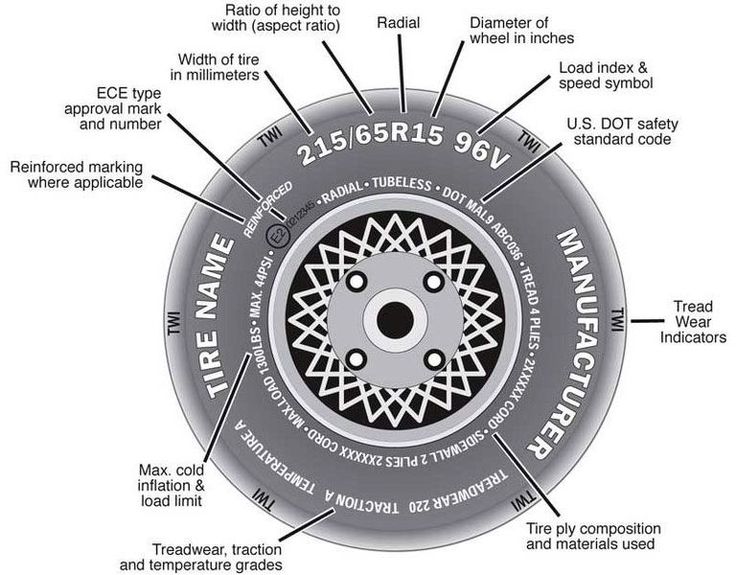Tires are not just round and black they are sophisticated products that can take years of research and development to produce. If you have ever wondered how tires are made, the following is a roadmap for the construction of a radial tire:
Start with Rubber and Additives
Tire construction starts when raw chemical additives such as sulfur, carbon black and solvents are combined with natural and synthetic rubber. The process takes place in a large machine called a banbury.
In addition to mixing and grinding, the banbury heats the rubber to make it workable in preparation for further applications. The raw product emerges in the form of long, flat bands of rubber, which are then worked in rolling mills.
Six Main Components
It takes several machines to shape the rubber into the individual components of the tire: tread, ply, belts, beads, sidewalls, and innerliner.
The tread rubber is extruded through a tuber, then measured, cooled and cut into precise lengths.
Sidewalls are also extruded through tubers, along with the white rubber for a white sidewall or white lettered tire if required.
The ply is produced in a calender mill, which combines thin sheets of rubber and fabrics like nylon or polyester. The large sheets are cut to width, rolled and transported to the assembly area where all the components will come together.
At the same time as the raw rubber is transformed into the tread and plies, the creel room equips the tire with its basic strength. Fine steel wire goes into the manufacturing of belts for the steel-belted radial tire. Rubber from the mills and steel from the creel room are molded together into wide flat sheets, cut on the bias, rolled, and moved to the tire-building machine.
The innerliner is a impermeable layer of rubber on the inside of a tire which creates a airtight chamber when fitted to the vehicle wheel. This layer eliminates the need for a innertube.
The last major component of the tire is the bead.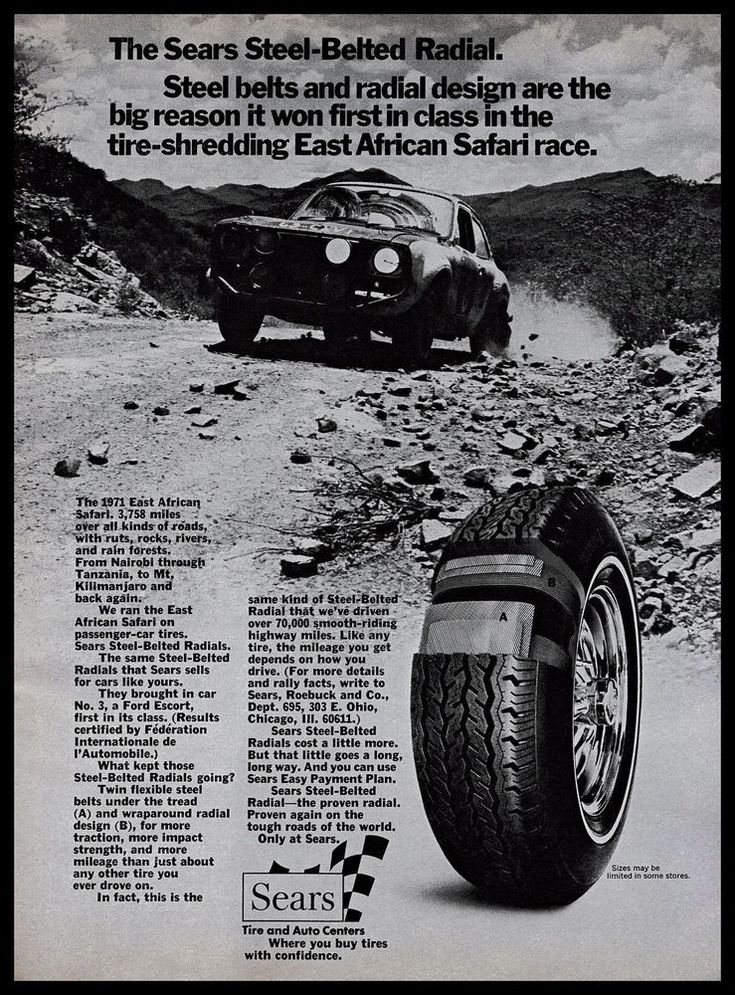 The beads are created out of wrapped steel wire, covered with rubber and formed into hoops. The bead anchors the fabric plies of the tire and seats the tire firmly on the wheel.
The beads are created out of wrapped steel wire, covered with rubber and formed into hoops. The bead anchors the fabric plies of the tire and seats the tire firmly on the wheel.
The Green Tire
The six components (tread, ply, belts, sidewalls, liner and beads) come together on the tire-building machine. These six components are assembled into what is known as an uncured, or green, tire in two stages.
The carcass of the tire, including beads, plies, sidewalls and liner, is constructed on one side of the machine.
The tread and the underlying belts are assembled next to the carcass on the other side of the machine.
The two sub-assemblies are then joined together and the result is a green tire.
Vulcanization
The next phase is vulcanization, the molecular transformation of the soft, gummy green tire into the tough, and long-wearing, modern passenger tire. The green tire is placed in a curing mold and is subjected to intense pressure and high heat internally and externally for a specified period of time. Simultaneously, the tread pattern is imprinted onto the rubber. When it comes from the mold, the tire is ready for final finish and inspection.
Simultaneously, the tread pattern is imprinted onto the rubber. When it comes from the mold, the tire is ready for final finish and inspection.
Final Finish and Inspection
For showroom quality, any excess rubber is trimmed off the cured tire. Every tire is thoroughly inspected. The tire then undergoes various uniformity checks to assess ride and comfort quality. Once the tires have passed all the checks and inspections, they are sent to the distribution warehouse for shipment.
If you’re like us, you spend an unhealthy amount of your precious time thinking about tires. If you’re like everyone else, you probably only consider your tires when they’re causing you problems or when they need to be replaced. But even if they’re the last thing on your mind, tires are a critical component of automotive design that has changed the way we travel in vehicles of all types, so it’s worth taking the time to learn about them.
Throughout the past twelve decades or so, tires and automobiles have come a long way, to say the least.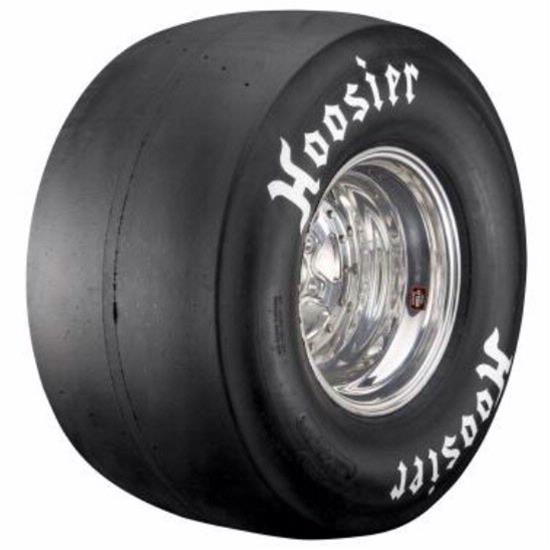 The rubber you drive on every day is similar in many ways to the tires of years ago, but new technology and safety requirements have pushed modern tire design into the fascinating territory. Tires are capable of improving the handling, safety, and ride quality of your car, so the Guides & Gear editors from The Drive are here to help you understand the basics of how they’re made. We consulted the professionals at Michelin to help explain how they're constructed, what they're made of, and how they've changed throughout the years.
The rubber you drive on every day is similar in many ways to the tires of years ago, but new technology and safety requirements have pushed modern tire design into the fascinating territory. Tires are capable of improving the handling, safety, and ride quality of your car, so the Guides & Gear editors from The Drive are here to help you understand the basics of how they’re made. We consulted the professionals at Michelin to help explain how they're constructed, what they're made of, and how they've changed throughout the years.
Let’s get rolling.
Put simply, tires are rings of rubber that fit around a vehicle’s wheels to cushion the vehicle from the road and help keep it under control. Tires are the only parts of a vehicle that are actually designed to touch the pavement.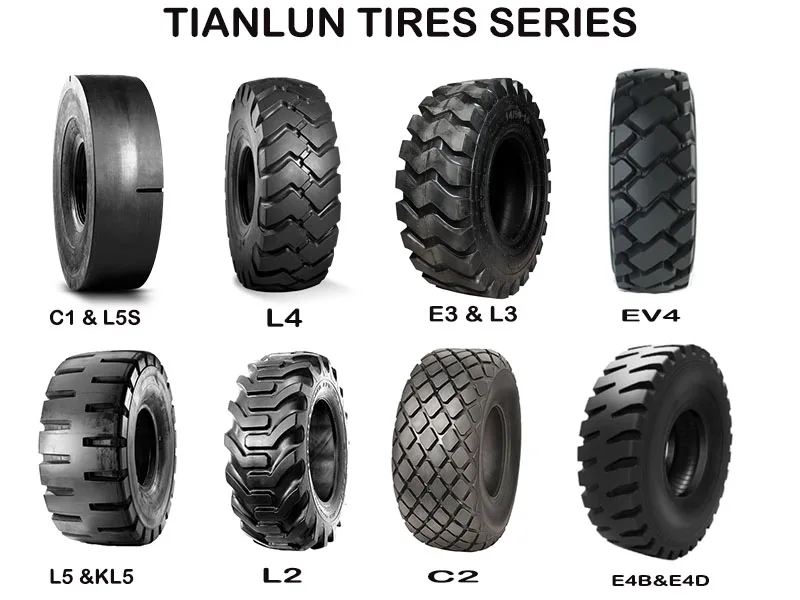 Though there are many types of tires, the most common for passenger vehicles are pneumatic tires, which are inflated with air or gas to maintain pressure. Most tires today are radial, which means that the cords and internal components are aligned to be perpendicular (90 degrees) with the driving direction.
Though there are many types of tires, the most common for passenger vehicles are pneumatic tires, which are inflated with air or gas to maintain pressure. Most tires today are radial, which means that the cords and internal components are aligned to be perpendicular (90 degrees) with the driving direction.
It’s important to note that tires are not a monolithic group. There are different types, each with a specific function and purpose. Racing tires, for example, are designed to provide maximum grip and cornering performance at the expense of all else (ride quality and longevity, mainly), while passenger car tires are designed to give the vehicle a smooth and quiet ride, good fuel economy, and reasonable safety.
Although we can’t go back in time to meet the people who invented the wheel, we do know when modern-style pneumatic tires were first put to use. The first pneumatic tires were developed in the mid-1800s by a guy named Rober William Thomson, but weren't affordable or practical enough for mass production. In 1888, John Boyd Dunlop developed a pneumatic tire for bicycles that is credited as the first widely available model. Though Michelin developed a tire for the automobile, it wasn't durable enough to be sold and didn't take off. It took until 1911 for a tire with an air-filled inner tube to have success.
In 1888, John Boyd Dunlop developed a pneumatic tire for bicycles that is credited as the first widely available model. Though Michelin developed a tire for the automobile, it wasn't durable enough to be sold and didn't take off. It took until 1911 for a tire with an air-filled inner tube to have success.
As everyone preferred some impact protection, pneumatic tires became the norm. Treads were then added in the early 1900s, and tire tech progressed quickly from there, though not without some fairly horrible prospective paths along the way. The DuPont Company developed a commercially viable synthetic rubber in the early 1930s, paving the way for the natural and synthetic mix that's still the preferred method for making tires today.
Since the first tires in the late nineteenth century, tires have been developed for specific applications, including tubeless tires, radial tires, run-flat tires, winter tires, and mud tires, among many others. With the realization that tire production and subsequent disposal or recycling is having a significant and negative impact on the environment, tire manufacturers are trying to shift their focus to ensuring that their tires and the processes that build them are doing as little harm as possible.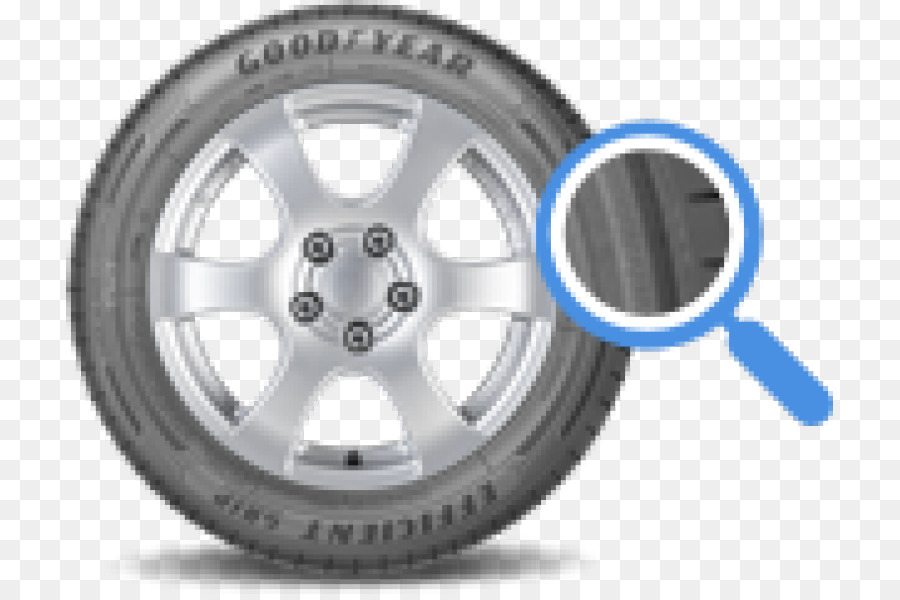 Tire giants like Michelin, for example, have launched elaborate long-term sustainability initiatives that involve sourcing as many recycled and bio-sourced materials as possible. Michelin says that its modern tires are made from over 200 components and materials and notes that it has invested in an in-house technology incubator to find ways to convert as many of those components to sustainable and recycled materials—certainly a tall task.
Tire giants like Michelin, for example, have launched elaborate long-term sustainability initiatives that involve sourcing as many recycled and bio-sourced materials as possible. Michelin says that its modern tires are made from over 200 components and materials and notes that it has invested in an in-house technology incubator to find ways to convert as many of those components to sustainable and recycled materials—certainly a tall task.
Another apsect of that focus on environmental issues has been to turn the topic of a tire’s rolling resistance into a primary focus of development in recent years. For electric vehicles and hybrids, the tires are designed to find a balance between performance and grip and rolling coefficient levels that help improve total range.
Perhaps the most impactful innovation that continues today, however, is the radial tire. Radial tires feature steel belts and plies, which are composed of rubber-coated steel. The plies are arranged radially around the tire and allow for better flexibility, comfort, and efficiency.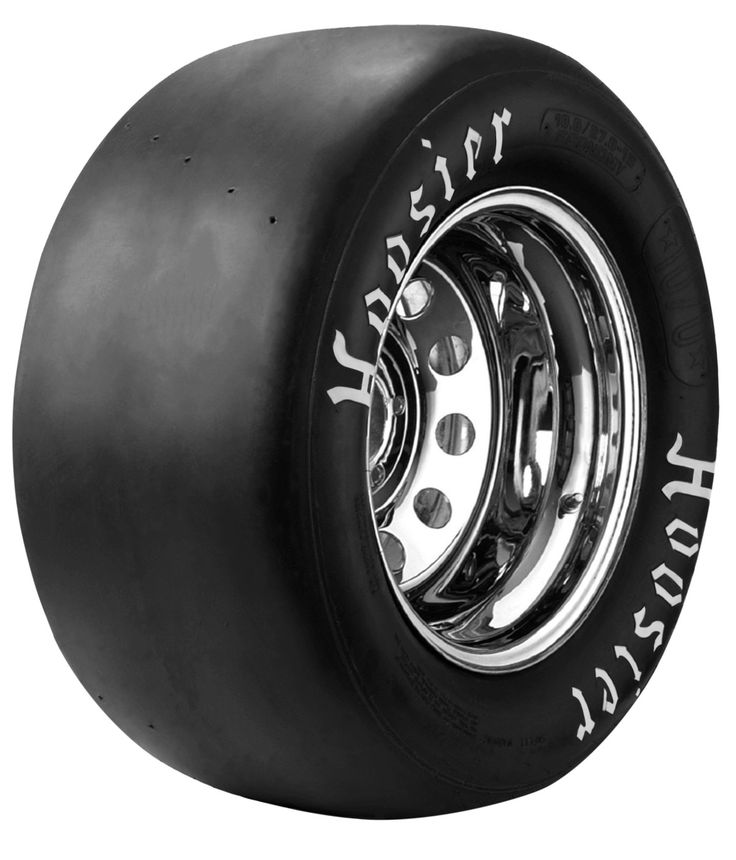 Before we get into how modern tires are made, though, let's dive into their anatomy.
Before we get into how modern tires are made, though, let's dive into their anatomy.
Here’s the breakdown of the major parts of an average radial tire:
Inner liner: An innertube made of synthetic rubber that maintains the air pressure
Carcass ply: Thin textile cords affixed to rubber that provide structure and support
Lower bead area: Located at the exterior “edges,” this is where the tire holds onto the wheel when rolling over the ground
Beads: Each wheel features two beads, or circular metal wires, that maintain an airtight fit with the rim of the wheel and keep the tire seated
Sidewall: The outside-facing section of the tire that protects it from curbs and other damaging exterior forces
Casing ply: Providing a majority of the strength of the tire, the casing ply is made of up a bunch of tiny metal cords
Cap ply: What Michelin also calls the “zero degree belt,” the cap ply is made of rubber-covered reinforced nylon cords and maintains the tire’s shape while reducing heat
Crown plies: The structural base of the tread
Tread: The tread is the pattern seen on the flat outside portion of the tire.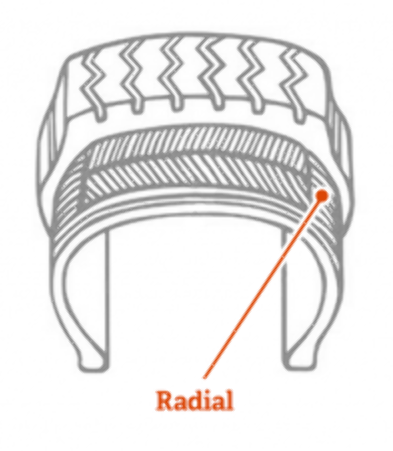 This not only creates traction and grip on the road, it also helps remove any water and dirt from the tire’s surface.
This not only creates traction and grip on the road, it also helps remove any water and dirt from the tire’s surface.
In general, the assembly line process starts with mixing and combining raw materials. From there, it progresses through various stages to form the tire and bond various components, such as the treads and sidewalls, together. The final stage involves curing the tires to harden the rubber and set in final details, such as branding and tire size information. Let's break each down.
Materials SelectionDepending on the type of tire and its purpose in life, different rubbers, pigments, oils, and additives are selected to create the desired characteristics. This mix ends up being somewhere in the neighborhood of 20 percent natural rubber and 25 percent synthetic rubber, with the rest of the tire being made of metals and other materials. Michelin notes that its tires contain numerous chemical agents that give various tire qualities such as low rolling resistance or ultra-high grip.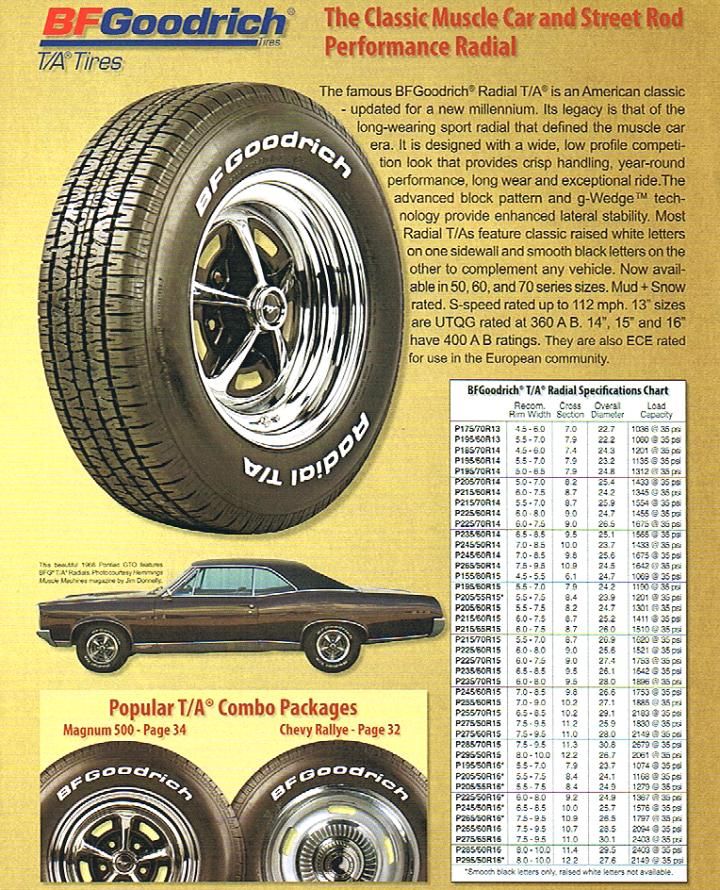
Even in today’s automation-heavy world, there are still parts of tire manufacturing that rely on human hands. Michelin says that its tires progress through both hand-made and automated processes, and notes that when necessary, it invents its own manufacturing machines and techniques. Tire production begins by mixing the ingredients together, which yields a homogeneous black mixture of tire goo. Computers monitor and control this process to ensure consistency among the huge numbers of tires being produced. The mixture then moves to other machines to be processed into various tire parts.
Assembly continues when an inner liner is placed inside the tire. Since there are no tubes in modern automotive tires, this air- and moisture-resistant material takes its place. Belts and plies are added next, which are made from steel and other materials. To ensure a tight fit with the wheel, bronze-coated steel wires are added to the tires’ sidewalls. The tire components are placed in position and then pressed together to create “green” tires.
The tire components are placed in position and then pressed together to create “green” tires.
Before curing, tires are called “green” tires, and need to be heated to complete the molding and building process. The tires are placed into a mold and are either inflated or pressed against it, which gives the tire both a tread pattern and sidewall stamping. After the molding is complete, tires are heated to a high temperature—usually 300 degrees Fahrenheit or more—for up to a half-hour. This process vulcanizes the tire, which hardens the rubber and helps cure it. Specialty tires, especially large off-road and heavy machinery tires, can take much longer to cure.
Snow tires are made from special rubbers and materials that allow them to provide grip in winter weather., MichelinTesting and Quality ControlTire manufacturers each have their own proprietary testing methods, but the process sometimes involves grabbing a random selection of tires rolling off the assembly line.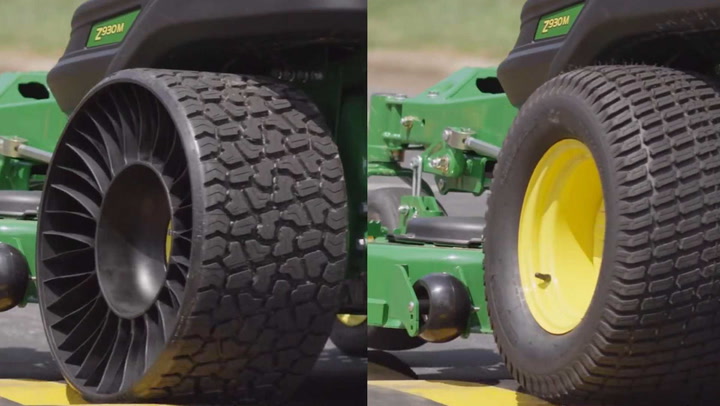 The tires are tested on the road, cut into to check for consistency and imperfections, and x-rayed.
The tires are tested on the road, cut into to check for consistency and imperfections, and x-rayed.
You’ve got questions, The Drive has answers!
Q: How long do tires last?A: This will greatly vary and depend on driving conditions, driving habits, and type of tire, but the general rule is that tires could last up to 5-6 years. For more information on tire care and maintenance, visit our article, How Long Do Tires Last and When Should I Replace Them?
Q: Is natural rubber used in tires?A: Yes, though the amount is different for every tire. In general, tires today contain around 20 percent natural rubber and 25 or so percent synthetic rubber. Metal and other materials make up the remaining tire materials list.
Q: What do the numbers on the side of my tire mean?A: We assume you’re asking about the string of text that starts with “P. ” This is a designation of your tire size. If you see P225/65R17 on the side of your tire, it means this:
” This is a designation of your tire size. If you see P225/65R17 on the side of your tire, it means this:
A: While cheap tires are not universally bad, there’s a reason high-end tires cost more, and it’s not just branding. Cheap tires may contain less rubber or may be constructed with a mix of materials that don’t give them the longevity of more expensive tire models.
Q: What does the mileage warranty on my tires mean?A: Your tires’ mileage warranty means that the manufacturer will cover them against defects for the duration of that warranty and that the company expects its tires to last at least as long as the warranty under ideal conditions. This does not mean that only getting 25,000 miles out of a 50,000-mile tire will net you a new set of tires if you complain. It means that, after an inspection, you may be entitled to a new set of tires at a prorated price, which will depend on how many miles you have left on the warranty. If you failed to rotate the tires or take care of them properly, you can expect some pushback when trying to make a warranty claim.
This does not mean that only getting 25,000 miles out of a 50,000-mile tire will net you a new set of tires if you complain. It means that, after an inspection, you may be entitled to a new set of tires at a prorated price, which will depend on how many miles you have left on the warranty. If you failed to rotate the tires or take care of them properly, you can expect some pushback when trying to make a warranty claim.
You know you want more tire manufacturing facts!
 Michelin offers Tweel tires, which are airless radial tires that replaces the entire wheel/tire setup. They are currently offered for UTVs and some heavy equipment, but the company has developed and shown off automotive prototypes.
Michelin offers Tweel tires, which are airless radial tires that replaces the entire wheel/tire setup. They are currently offered for UTVs and some heavy equipment, but the company has developed and shown off automotive prototypes.We’re here to be expert guides in everything How To related. Use us, compliment us, yell at us. Comment below, and let’s talk! You can also shout at us on Twitter or Instagram, here are our profiles. Got a question? Got a pro tip? Send us a note: guidesandgear@thedrive. com.
com.
We will devote this article to the wheels that are installed on modern cars in 90% of cases. Also, our experts will tell you how radial tires are arranged, what are the features of their design, why they are so in demand, how they differ from bias tires. To make it easier to talk about products marked R, let's see what is "inside" them, how to determine their marking, where and why it is applied.
Before considering the device of a radial type product, let's look at their general structure:
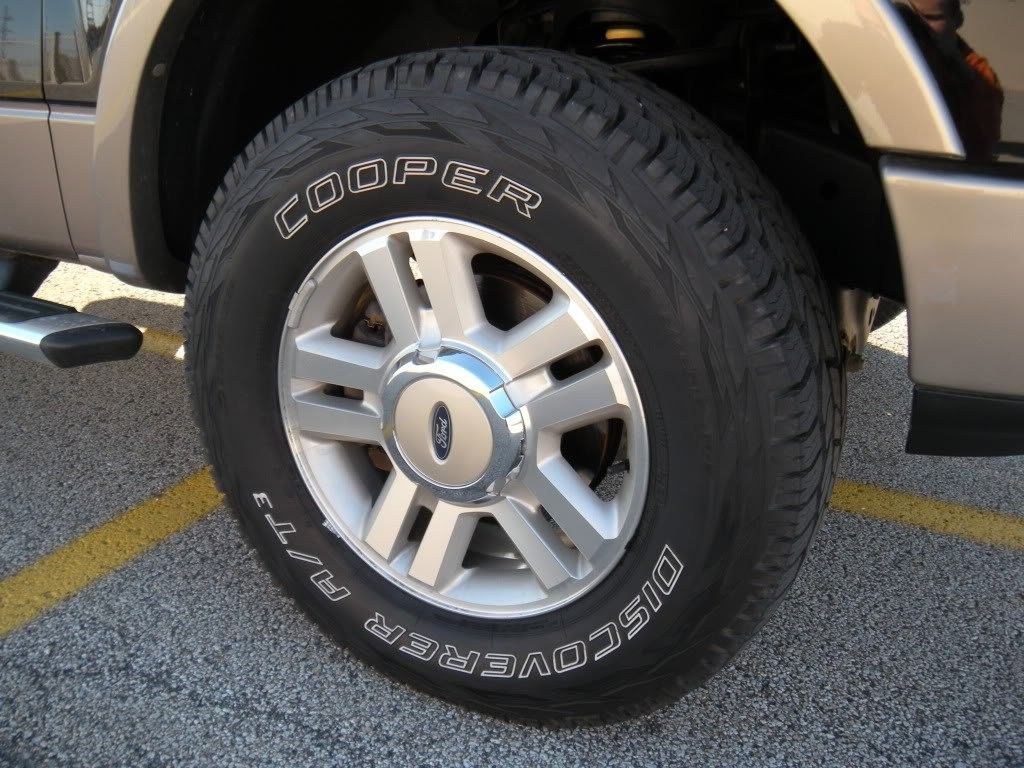
It is this design that is considered optimal and is still relevant today. On the one hand, the wheel has nothing superfluous that could make the total weight heavier and negatively affect the speed and maneuverability of the vehicle, on the other hand, manufacturers care about the reliability and durability of products as much as possible.
Both Bias and Radial Passenger Car Tires are made from a special rubber that is made from rubber (artificial or natural). At the same time, the base is made of cord fabric - tightly twisted threads of textile, polymer, metal material, most often located longitudinally and responsible for strength.
Outside there is a breaker - a guarantee of rigidity and a shock absorber. It is closed with a tread, which is responsible for the quality of grip with the roadway. For better contact, a pattern is applied to the rubber surface, it forms a pattern of grooves and checkers to effectively wick away dirt and water.
An important element shared by both radial and bias-ply carcasses is the bead, which provides a fairly tight fit to the rim.
The visual perception of a tire depends mainly on the tread pattern. With the same pattern in appearance, both options will be similar in appearance. How not to confuse them, especially for a beginner? This is exactly the situation when you need to look at the markings and find R in the article (at 90% of cases) or D. This will give you an idea of the nature of the lunge. Let's see why this moment is fundamentally important.
All carcass threads run parallel to the profile from the sidewall - they do not intersect in any of the layers. It is this feature that you should pay attention to, it is key and affects the performance of the tire (which we will discuss separately below).
To clarify: the abbreviation will not necessarily be indicated on board. Some manufacturers spell the word Radial in full, as well as TUBELESS. This is done in order not to confuse the consumer, because the marking next to the letter R usually contains dimensions, and the letter is visually lost. For example code 195/65 R15 tells us the current 195mm width, 65% of that figure height and fifteen inch rim diameter.
This is done in order not to confuse the consumer, because the marking next to the letter R usually contains dimensions, and the letter is visually lost. For example code 195/65 R15 tells us the current 195mm width, 65% of that figure height and fifteen inch rim diameter.
The described version provides:

That is why in 90% of cases we will see the letter R on rubber.
The main difference is in the performance of the cord layers. Usually there are an even number of them, they do not go in parallel. Neighboring threads intersect approximately in the middle of the tread due to the fact that they are placed at an angle of 35-40 degrees. They can be made from any material, but nylon and nylon are the most common.
Usually there are an even number of them, they do not go in parallel. Neighboring threads intersect approximately in the middle of the tread due to the fact that they are placed at an angle of 35-40 degrees. They can be made from any material, but nylon and nylon are the most common.
This design allows for an internal air chamber and the installation of two bead rings instead of one. And this is an exclusively “internal” moment that determines the configuration, it is not visible externally.
Advantages of this arrangement of carcass threads:
But this option also has disadvantages, especially with constant and intensive use of rubber in a changeable Russian climate and often broken roads. In practice, there is a significant difference between a radial and bias tyre. The last one, for example:
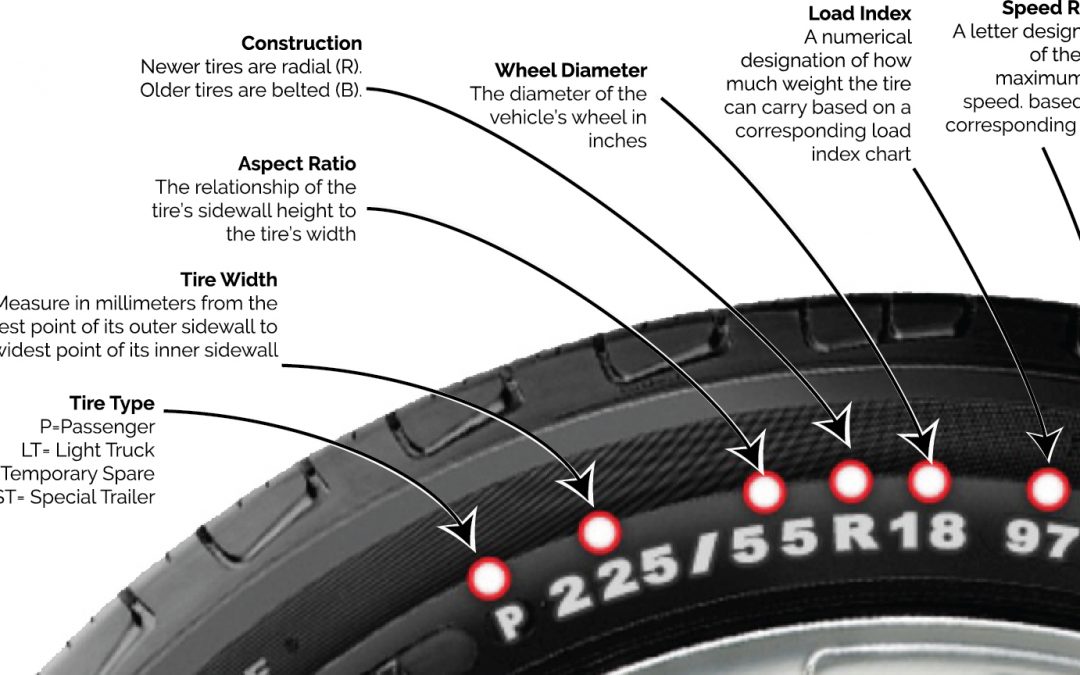
So, we have radial and diagonal tires. What is the difference between them seems to be clear, which one is better is also clear. So where do those 10% who choose D models come from? Naturally, such rubber is acquired not out of ignorance or mistake, but for certain reasons. The list of main reasons:
When considering tire types, remember the general rules to follow at the time of purchase:
 The first one is designed for frost, snowy and icy roads, the second one has good grip with the roadway, but loses these positive properties at +7℃ and below. The third ones are universal and weather-oriented from +6…+11℃.
The first one is designed for frost, snowy and icy roads, the second one has good grip with the roadway, but loses these positive properties at +7℃ and below. The third ones are universal and weather-oriented from +6…+11℃. 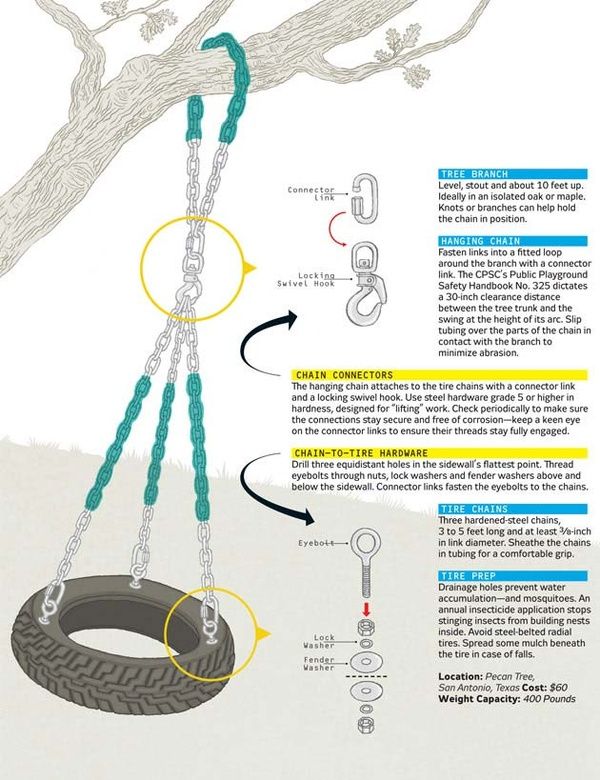
All the main differences are shown in the form of a table for clarity.
| Feature/parameter | R | D |
| Number of cord layers | one | several |
| Threads | run in parallel | intersect at 35-40° |
| Number of bead rings | 1 | 2 |
| Wear resistance | large | small |
| Service life | long | almost 2 times lower |
| Effect on handling | improved with wide contact patch | have no positive effect |
| Rolling resistance | minor | essential |
| Load resistance | strong | weak |
| Camera | no | yes |
| Comparative weight | lighter | heavier |
| Base thermal conductivity | high | low |
As you can see, there are a lot of nuances, but we want to pay attention to the key feature of the structure.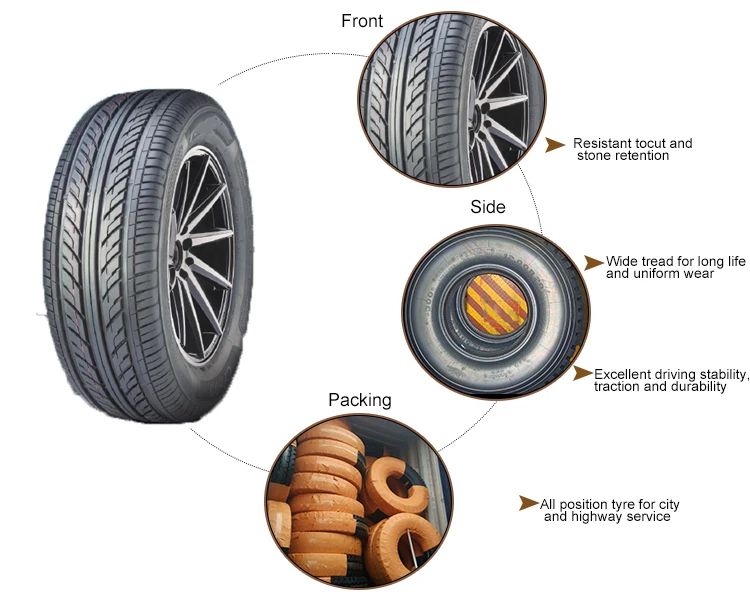 Since the carcass threads in a radial tire are parallel, it is more suitable for high-speed driving. That is why R-category tires are equipped with Light Truck class vehicles, while D-models today are mainly installed on excavators, tractors and other special-purpose vehicles, which, by the nature of their activities, should not move quickly.
Since the carcass threads in a radial tire are parallel, it is more suitable for high-speed driving. That is why R-category tires are equipped with Light Truck class vehicles, while D-models today are mainly installed on excavators, tractors and other special-purpose vehicles, which, by the nature of their activities, should not move quickly.
We have looked at what diagonal and radial tires are, how they differ from each other, now we will talk about their common features. Both the first and the second need to be regularly looked after - periodically inspect, pay increased attention to the condition of the tread and side parts.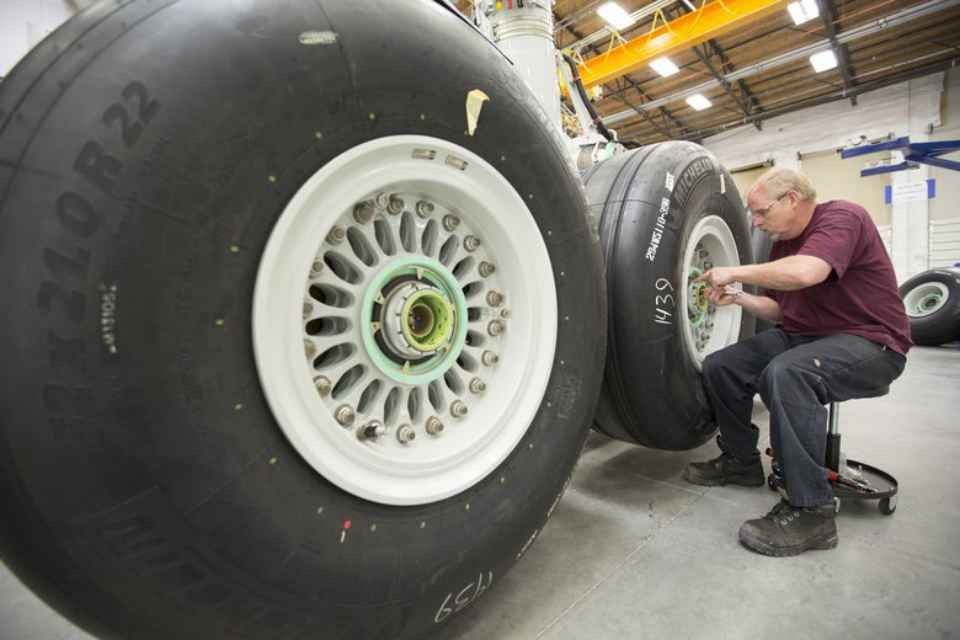 If any visually noticeable defects are found, you should immediately contact the service station so that the tire is examined by specialists. The presence of damage is also indicated by a change in the behavior of the car while driving - if the car moves to the side when making maneuvers, then there is definitely a problem.
If any visually noticeable defects are found, you should immediately contact the service station so that the tire is examined by specialists. The presence of damage is also indicated by a change in the behavior of the car while driving - if the car moves to the side when making maneuvers, then there is definitely a problem.
When buying, be sure to pay attention to the inscription on the board - the symbols will show you what this or that model is like. The article contains all the data: type, which means a radial tire, the direction of installation of rubber, basic dimensions, and so on. But how to read it?
Let's say you see 225/70R15. Here 225 is the width in millimeters, 70 is the height expressed as a percentage of the previous value, 15 is the diameter in inches, well, you already know what the letter R says.
Recording format can be different, without "/", for example, 185R14. This indicates only a full-profile performance. Some manufacturers are increasingly beginning to indicate all parameters in millimeters, and then the marking takes the form 265 / 790R540.
Some manufacturers are increasingly beginning to indicate all parameters in millimeters, and then the marking takes the form 265 / 790R540.
Please note: on D-group tires, all sizes are often written in inches, without letters and separators, please note this.
So, we have examined in detail how to distinguish a radial tire from a diagonal one, even if outwardly both of them look almost the same - look for the coveted letter R in the article.
For passenger cars these are:
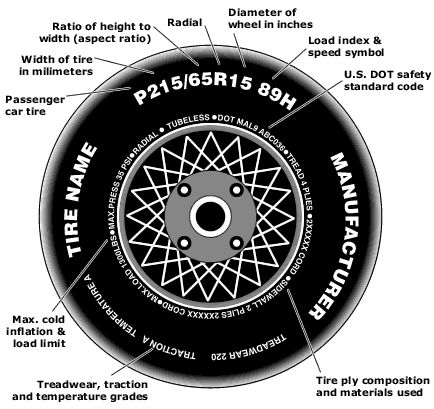
To summarize. Now you know what a radial or diagonal tire means, and which is better in a given situation. And if you need to buy good tires, please contact us - we offer excellent tires at competitive prices.
Material worked on:
Ilya Kamnev
Mechanic
In this article we will talk about radial and bias tires and their carcasses, how they differ and what is best for use at a given time.
Car tires are designed to improve driving performance, protect the wheel chamber and provide excellent braking in emergency situations. In the recent past, it did not matter which tires, and even more so with which carcass, to use for driving.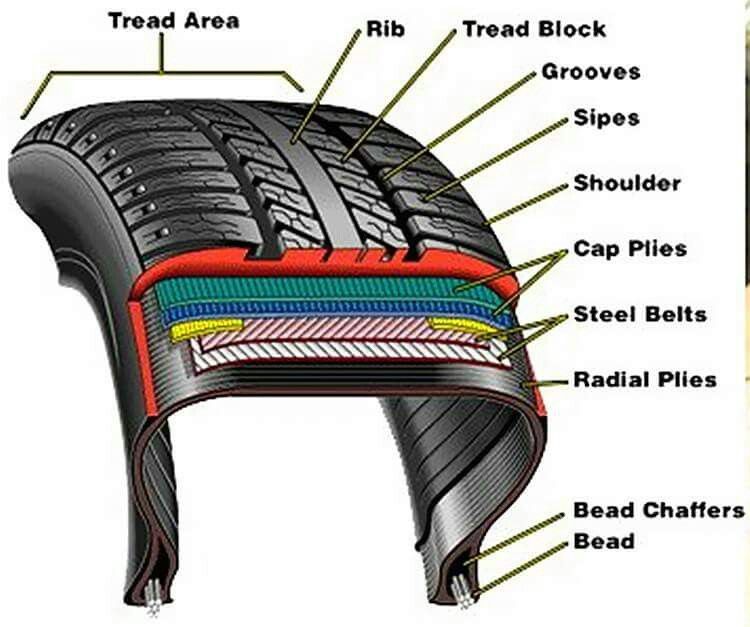 There were always problems with the choice and usually people bought what they could. At present, everything has changed a lot, now there are two types of tire carcass - these are radial and diagonal tires. Let's try to figure out what different types of tires are made of, how their structure differs, and what are the pros and cons of both types of tires and tires.
There were always problems with the choice and usually people bought what they could. At present, everything has changed a lot, now there are two types of tire carcass - these are radial and diagonal tires. Let's try to figure out what different types of tires are made of, how their structure differs, and what are the pros and cons of both types of tires and tires.
Structural features of radial and bias tires
Differences between radial and bias tires
To begin with, before comparing two different types of tires, it is necessary to understand what a modern car tire consists of. Any tire necessarily consists of different carcass layers, each of which has its own purpose and name. The primary layer is called the carcass of the tire. It is very important and is responsible for the primary shape of the product and gives it the most important thing, strength and rigidity.
Further layers of the rubber compound smoothly pass into the floodlight zone (tread), which makes the contact of the wheel contact patch with the road.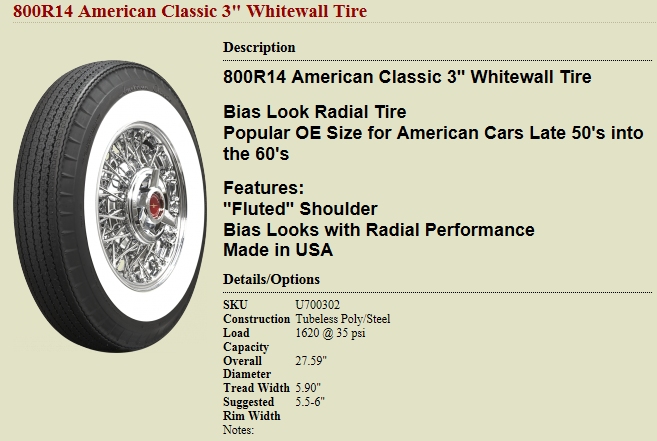 All these layers are commonly referred to as a breaker. The breaker is that part of the rubber that accounts for the maximum part of the various loads. In connection with this, this structure is strengthened with a metal frame, which is called a metal cord.
All these layers are commonly referred to as a breaker. The breaker is that part of the rubber that accounts for the maximum part of the various loads. In connection with this, this structure is strengthened with a metal frame, which is called a metal cord.
It is worth noting that it is in the weaving of the carcass that two types of tires are distinguished, more precisely based on the location of the layers of rubber and metal cord. In diagonal types of tires, the carcass is woven at an angle of 90 degrees to all layers of rubber, and in radial types at an angle of 45 degrees (approximately).
In diagonal types of tires, in order to prevent the carcass from coming apart, it is woven in several layers, each of which overlaps the previous one. It is important to note that for a successful design of such a tire or tire, it is precisely an even number of layers that is necessary, therefore, usually four are used.
Tire construction
A completely different technology is used in radial tires and tires. The frame threads are laid there perpendicular to the path of movement, which means that they do not require additional layers reinforcing the structure. However, both tire types have their pros and cons.
The frame threads are laid there perpendicular to the path of movement, which means that they do not require additional layers reinforcing the structure. However, both tire types have their pros and cons.
Video - comparison of radial and bias bias tires
Lightweight bias tires have been out of production for a long time. But in museums you can find samples of Soviet diagonal tires, which in the past were widely used even on cars. So let's take a look at their advantages and disadvantages, compared to a radial tire competitor.
A tire with a diagonal carcass, due to the multi-layered carcass, has high strength, not all tires have such characteristics. First of all, this concerns its sidewall, which is not afraid of any side cuts.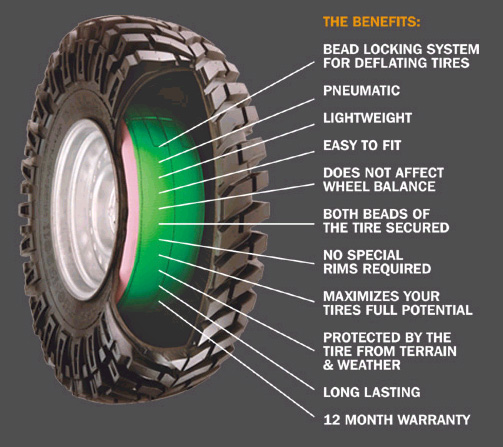 Even if it turned out that the sidewall was torn, it can be quickly repaired with a diagonal patch and continue to operate. The radial tire, on the other hand, requires detailed repair and in some cases is not repairable
Even if it turned out that the sidewall was torn, it can be quickly repaired with a diagonal patch and continue to operate. The radial tire, on the other hand, requires detailed repair and in some cases is not repairable
The difference between the diagonal and radial tires
An additional advantage of a diagonal tire or tire is usually considered to be that it takes shocks and loads softer, which in turn creates additional shock absorption when driving a car when driving on uneven road sections. But the most important advantage of a diagonal tire is the simplicity of their production, which clearly gives an advantage in cheapness over the radial type of tires.
Unfortunately, this is where the advantages of diagonal rubber end, and then we will talk about its disadvantages. Let's start with the fact that the diagonal tire does not hold its shape at all, so it has a strictly set pressure for a long time and because of this it is very sensitive to pressure.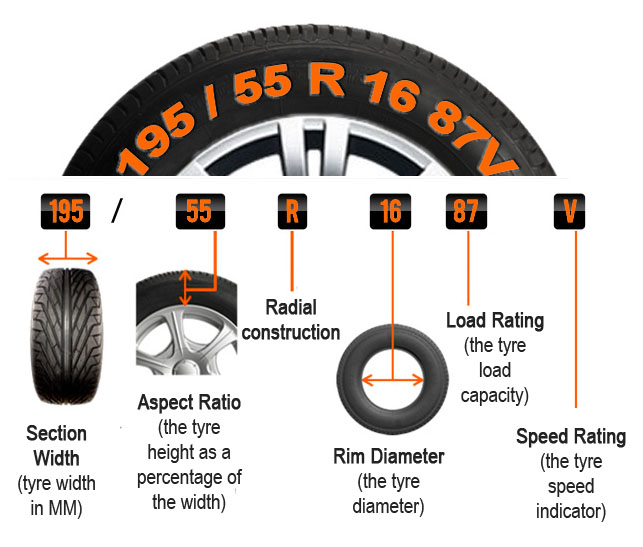 Due to the increased pressure, uneven and accelerated wear of the searchlight zone is obtained, which leads to a violation of the vehicle's controllability, this greatly affects traffic safety. Radial tires do not have these drawbacks.
Due to the increased pressure, uneven and accelerated wear of the searchlight zone is obtained, which leads to a violation of the vehicle's controllability, this greatly affects traffic safety. Radial tires do not have these drawbacks.
Tire wear indicator
Another important problem of diagonal tires is increased sensitivity to temperature effects. The design features of a diagonal carcass tire provide for a constant displacement of the threads, which has a very negative effect on tire temperature changes. Because of this, when driving during hot weather at high speed along the highway, it can easily “blow up” a diagonal tire.
Another disadvantage is that the bias tire has a higher tread than the radial type. Due to the fact that the height of the larger tire is more noisy, as it directly depends on the production of tires. Drivers often complain about a long hum while driving a car.
The last drawback is very controversial, if you read the reviews, drivers often complain about the short patency of the tire, by analogy with a radial carcass.